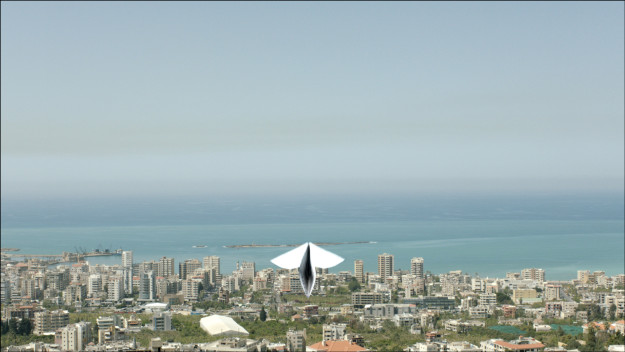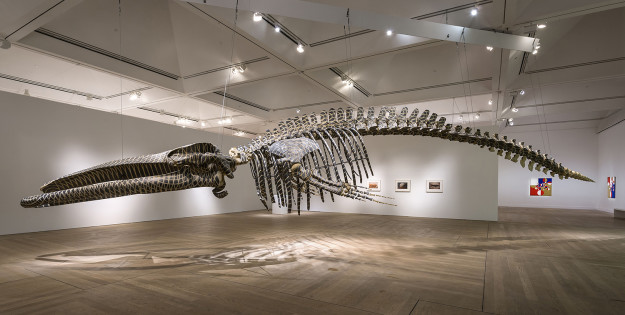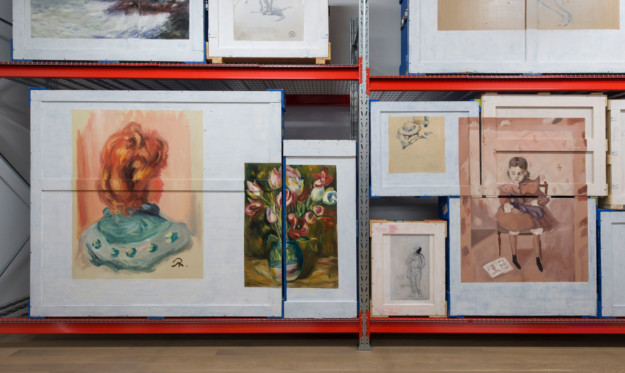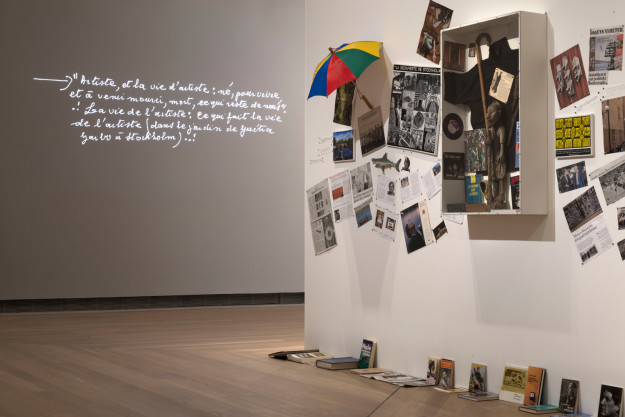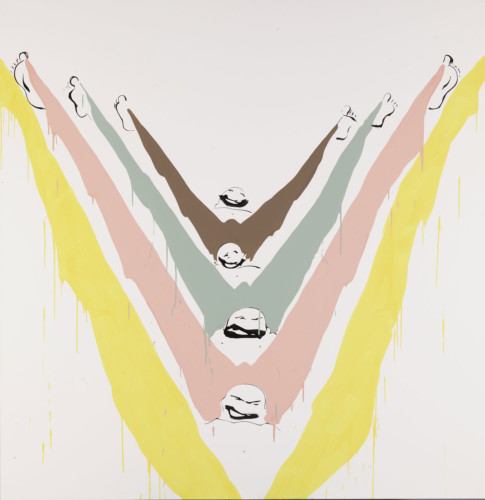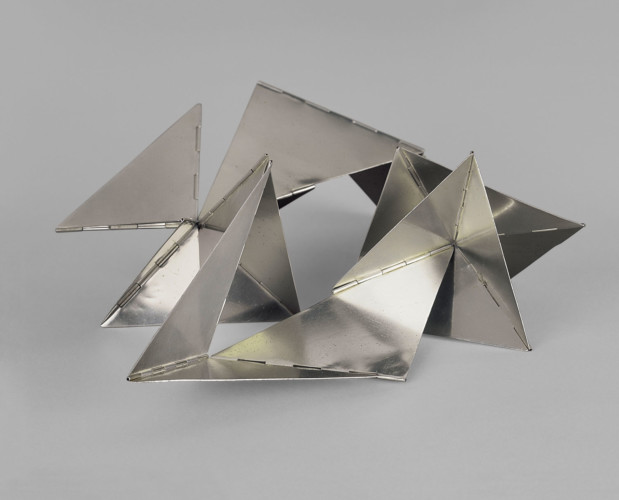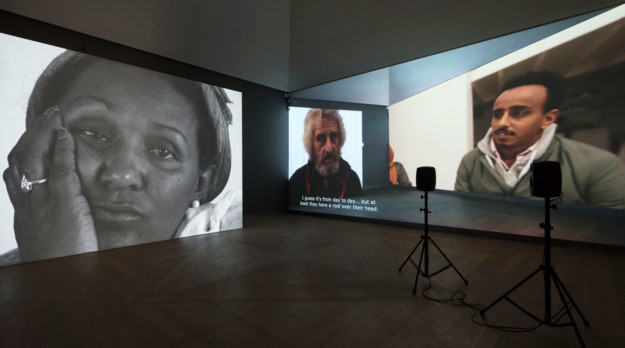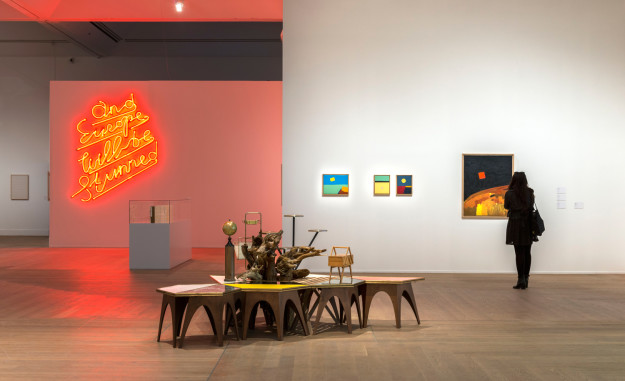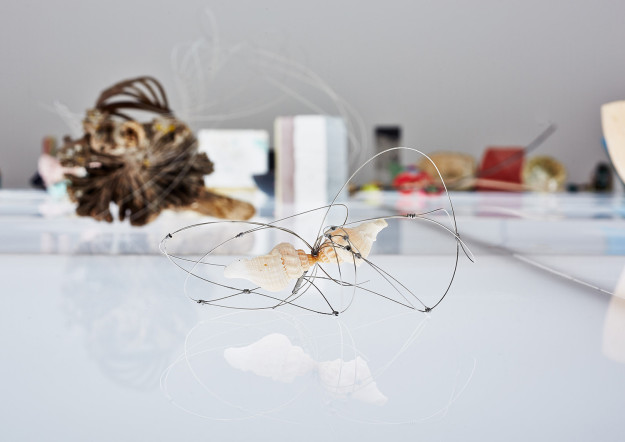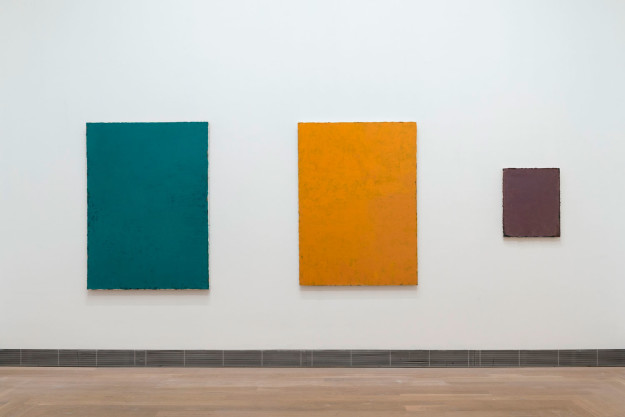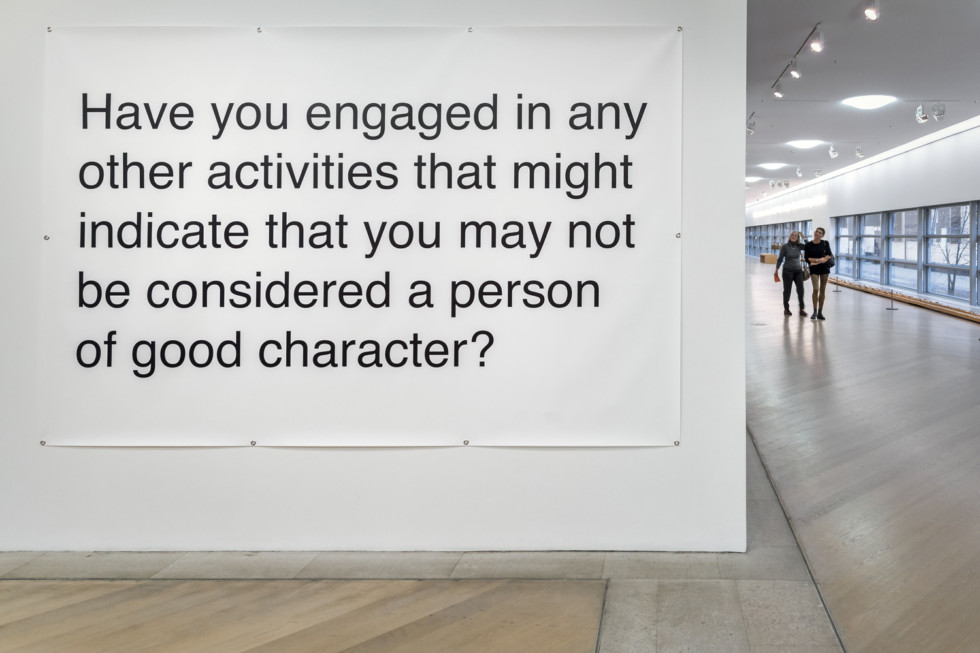
Meriç Algün Ringborg, Billboards, 2012 © Meriç Algün Ringborg. Photo: Moderna Museet / Åsa Lundén
A Larger World
Exhibitions, lectures, discussions and acquisitions
1.1 2010 – 31.12 2018
Stockholm
When the Museum was founded in 1958, the whole art scene seemed to revolve around Paris and New York. That is no longer so. Today, no city has the same central position on the art scene. Artists are active in many different locations at the same time, showing their work in constellations that shift our customary notions of centre and periphery.
The impact of the early history of modern art is still deep today. Therefore, we have been working actively to highlight alternative histories in relation to the narrative of the former art metropolises. With acquisitions for the collection, lectures and symposiums, we are opening the Museum to a new, larger world. This ambition also informs our selection of temporary exhibitions. Other, and different artistic geographies than before will be claiming attention.
Check this space for news on the latest developments:
Art – donations and acquisitions
Adel Abdessemed
Je suis innocent, 2012
This photograph was the poster for the major exhibition of Adel Abdessemed’s (born 1971) works at Centre Pompidou in 2012. It shows the artist covered with burning flowers, standing outside the door to his Paris studio. The title, ”Je suis innocent” (I am innocent) enhances the disturbing scene. In his work, Abdessemed often explores current affairs and older pictorial traditions. According to Catholicism, purgatory is the place where souls are cleansed before entering paradise. But the flames cannot harm the artist, because he is innocent. In this ambiguous image, we also see that the fire has spread from the burning man to the pavement and out into the street.
Georges Adéagbo
Benin
The Birth of Stockholm, 2014
Georges Adéagbo’s artistic approach is to explore how the viewer’s cultural framework charges objects and events with meaning. In the exhibition The Birth of Stockholm he “translates” the Sun Dog Painting in Stockholm Cathedral in the Old Town into a wood relief that he commissioned from an artist in Cotonou, his home town in Benin. It is presented in a gigantic installation, together with a mass of other images and objects bought at flea markets in Stockholm or found in the street. Georges Adéagbo also participated in the exhibition After Babel at Moderna Museet in Stockholm in 2015.
Etel Adnan
Lebanon
Sans titre, 1973–2014
Politics, aesthetics and war often feature in the works of the author and professor of philosophy Etel Adnan, along with a critique against intolerance. These four paintings are abstract images of shapes that also appear as landscapes with light and shadow as defining elements. They were shown in the Museum’s exhibitions Madhat Kakei’s Abstract Cabinet and After Babel in 2015, and also in the exhibition Towards a Larger World at Moderna Museet in Malmö in 2016.
Meriç Algün
Turkey/Sweden
Ö (The Mutual Letter), 2011
Becoming European, 2012
Meriç Algün has made several works that discuss identity, cultures, languages and bureaucracies. In the drawn triptych Becoming European, dates have been stamped in columns, signifying the artist’s EU arrival and departure dates. They are printed in different colours, representing the status she was given by the Migration Agency, for instance, “temporary residence permit” or “pending”.
Ö (The Mutual Letter) is a dictionary and an audio work based on 1,270 words that are pronounced differently in Swedish and Turkish despite having the same spelling and meaning.
Meriç Algün was featured in the solo show Becoming European at Moderna Museet in Stockholm in 2014, and in the group show Towards a Larger World at Moderna Museet Malmö in 2016.
Kader Attia
France/Algeria
Open Your Eyes, 2010
Open Your Eyes is a slide show installation comparing the Western concept of repairing the human body with the concept of repairing artefacts from non-Western cultures. The images show portraits of veterans from the First World War, a visual narrative about destruction and reconstruction suggestive of the restoration of objects from Africa.
The pictures are arranged as a comparative slide show, presenting a powerful critique of how colonialism and modernism have been hand-in-glove throughout the 20th century. The work was featured in the exhibitions After Babel at Moderna Museet in Stockholm in 2015, and Towards a Larger World at Moderna Museet Malmö in 2016.
Frank Bowling
Listening to Beethoven, 2016
Throughout his long career, Frank Bowling (born 1936) has probed the premises of painting in abstract works. Bowling drips, pours and scrapes paint onto large canvases with objects and scraps of other materials left in the paint. In a balancing act between intention and the potential of chance, he generates a tension in his paintings that resembles that of Jackson Pollock’s “action painting”. And yet, Bowling’s practice is charged with personal experience of marginalisation and political events, and his works have prepared the way for a generation of contemporary artists for whom there is no contradiction between abstract painting and political commitment.
Juan Castillo
Another Day, 2014–2017
From 1979 to 1983, Juan Castillo (born 1952) belonged to the Chilean artist collective C.A.D.A., which he co-founded. This conceptual art group highlighted and challenged the Pinochet dictatorship in Chile, often in the form of performances and social interventions. Juan Castillo has been living in Sweden since 1986. In the work ”Another Day”, he alludes to the history, politics and landscape of Chile. He writes the phrase “Te devuelvo tu imagen” (I give you back your picture) on a textile screen set against the Chilean landscape, before igniting it.
Lygia Clark
Estruturas de Caixa de Fósforos (Red Matchbox), 1964
In the late 1950s, a group of Brazilian artists seeking to dissolve the boundary between art and life jointly signed a ”Noe-Concrete Manifesto”. The neoconcrete movement passionately proclaimed that all the senses, not just sight, were needed to experience a work of art. Clark (1920–1988) was one of the original members. At the time, she began creating variable sculptures that could be shaped and reshaped in the encounter with the viewer – or participant. ”Estruturas de Caixa de Fósforos” (Matchbox Structures) is a series of open works that explore the boundaries of concrete art. Small enough to fit in the palm of your hand, and almost childishly simple, these works are intended to be in perpetual change. ”Estruturas de Caixa Fósforos” is a radical dissolution of the static work of art, and it was one of the last sculptures Clark made before she finally stopped making art objects in the late 1970s.
Tala Madani
Iran/USA
Morris Men, 2012
In the solo show Rip Image at Moderna Museet Malmö and Stockholm in 2013, Tala Madani commented on the complex and fragile masculinity in a society where women are absent. Her bizarre drawings, paintings and animations that oscillate between abstraction and figuration explore how human phenomena and events express the contemporary zeitgeist.
Rivane Neuenschwander
Brazil
Word/World, 2001
In the video Word/World, Rivane Neuenschwander (in collaboration with Cao Guimarães) filmed ants dragging and carrying small slips of paper with the word “word” on one side and “world” on the other. The macro perspective reveals to viewers not only a new scale but also an extraordinary life resembling a kind of social structure.
Human logic tells us that ants are unlikely to understand the meaning of the words they are carrying. But they are about to build a colony with them, which could be seen as a message to us humans that we could also manage to live together regardless of language and ethnicity.
The work was shown in the group exhibition After Babel at Moderna Museet Stockholm in 2015.
Gabriel Orozco
Mexico
Untitled, 1994–2017
Gabriel Orozco alternates freely between sculpture, photography, painting, drawing and installation, using all these mediums to portray the idea of the transient or eternal. Sometimes, this is very clear, in the form of a skeleton or skull. But even his more abstract, veritably geometrical works convey the idea.
Historically, geometry represents eternity. Orozco’s circles, semi-circles and quarter-circles, in patterns resembling diagrams, are painted on plastic film, photocopies, or airline tickets. Banal materials that are easily disposable meet infinite, divine geometry. These works were shown in his solo exhibition Natural Motion at Moderna Museet Stockholm in 2014.
Pratchaya Phinthong
549 kg (poster), 2017
Through migrant workers from Thailand, Pratchaya Phinthong (born 1974) gained an insight into the working conditions for berry pickers in northern Sweden. The following year, he managed to get hired and picked 549 kilos of berries in two months, earning SEK 2,513. The employer paid workers in cash from a safe, and when they came to collect their last wages the safe was standing open and empty. The poster ”549 kg (poster)” includes a picture of the safe, along with many other similar safes. It was printed in a number of copies corresponding to the weight of the berries Phinthong picked, and offered as a gift to visitors. During his time as a picker, he also kept a photo and video diary, and this material is shown as part of the work.
Walid Raad
Postface to the ninth edition: On Marwan Kassab Bachi (1934–2016), 2017
In the past thirty years, Walid Raad (born 1967) has been engaged mainly in three major projects. In the late 1980s, he embarked on ”The Atlas Group”, an archive documenting the civil war in Lebanon, based on subjective or apparently marginal data. The documents in the archive are attributed to various fictive persons, but Raad is the only member of the group. The work ”Postface to the ninth edition: On Marwan Kassab Bachi (1934–2016)” belongs to the project ”Scratching on the things I could disavow” and consists of 27 canvases that are painted on the reverse side. Marwan is one of the most prominent Arabic painters, but none of his works have been exhibited or bought by Moderna Museet. And yet, 27 drawings and paintings by him were found on the back of other framed works in the Museum’s storage. It is not clear whether these were painted by Marwan, or by an anonymous friend, admirer, supporter, critic or heckler.
Dayanita Singh
Time Measures Pillar, 2018
In her work ”Time Measures Pillar” (2018), Dayanita Singh (born 1961) expands her exploration of different ways of showing photographic images. The work consists of a teak construction containing 34 colour photographs. The series sprang from her previous work with analogue photography and book-binding, based on her interest in archives and paper. In an archive in India, Singh discovered a remarkable collection of beautiful fabric-wrapped bundles of paper with unknown content. The photographer has portrayed these unique packages of red cotton fabric, each with its own appearance and different kinds of knots. The project reflects on a society’s attempt to remember.
Atsuko Tanaka, Japan, Sakuhin (Work), 1955/2011
Japan
Work, 1973
Atsuko Tanaka (1932–2005) belonged to the Osaka-based Gutai group in 1955-1965. She created Denkifuku (Electric Dress) for a performance in 1956. The dress features hundreds of lightbulbs that merged her body, technology and the hallucinatory light of the modern city as she wore it on stage. The pulsating colours in Denkifuku (Electric Dress) recur in several of her paintings from the late 1950s and onwards. In Work, the many circles forming a network of lines resemble a circuit diagram, and also how life, existence and nature are interlinked in complex relationships.
Rirkrit Tiravanija
Thailand
2000–2013
Rirkrit Tiravanija’s artistic practice is characterised by social commitment combined with ethical questions. In 1990, instead of showing art, he served Pad Thai to visitors at a gallery in New York, and repeated this on several occasions around the world, with different dishes.
Tiravanija has increasingly ignored the prescribed division between life and art, by creating spaces for playful activities in the public domain. In 1998, for instance, he initiated a project in Sanpatong, Thailand, where he gave vacant lots to locals and artists, to stage a social situation occupied by friends and colleagues.“Untitled 2000 (How it is possible…)” is a house built by Rirkrit Tiravanija in that place, and which is now in the Moderna Museet collection.
A series of photographs from the project by Tiravanija was shown in Towards a Larger World at Moderna Museet Malmö in 2016.
Adrián Villar Rojas
Argentina
Los Teatros de Saturno III, From the series Fantasma (Ghost), 2014
From the series Pedazos de las personas que amamos (Pieces of the People We Love), 2007
A museum is based on the concept of classifying and preserving objects, but Adrián Villar Rojas’ works in organic materials can grow, change and decompose. Los Teatros de Saturno III is a large collection of remarkable objects – a sneaker, a melon peel filled with plaster, a chicken bone –in a state of metamorphosis that rebuts the notion of the finished work. Villar Rojas travels constantly with his team of assistants; he has compared his practice to a virus that lives in and off the art scene.
Adrián Villar Rojas was featured in the solo show Fantasma at Moderna Museet in Stockholm in 2015, and in the group show Towards a Larger World at Moderna Museet Malmö in 2016.
Haegue Yang
South Korea
Swedish Villa, 2012
Haegue Yang uses everyday objects, shaped as fragile, delicate sculptural installations, often incorporating Venetian blinds. In Korea, hand-woven bamboo blinds have protected women from view, while enabling them to look out. The home was traditionally a female domain, while the world outside belonged to the men. Yang uses the blind as a symbolic demarcation line for people living in the periphery, barred from the rest of society. This line can also denote the idea of national culture.
Swedish Villa is a sculptural installation consisting of metal Venetian blinds in yellow and blue, combined with electric cords and shining light bulbs. What makes a nation a home? The work was shown in the group exhibition After Babel at Moderna Museet Stockholm in 2015.
Akram Zaatari
Lebanon
Letter to a Refusing Pilot, 2013
Akram Zaatari explores subjective history writing through photographic documentation, letters, diaries, films and audio recordings. His video work Letter to a Refusing Pilot is based on an event that he heard about many times in his childhood. An Israeli fighter pilot was ordered to bomb a Lebanese target but refused.
The work was featured in Unfolding at Moderna Museet in Stockholm in 2015, a show resembling the excavations in the city of Saida, south of Beirut, where the artist was born and raised.
Exhibitions
Several temporary exhibitions break the mould of the standard Western narrative. Read more about our exhibition initiatives in recent years here:
Yael Bartana – and Europe will be stunned, 2010
Doris Salcedo – Plegaria Muda, 2011
Tala Madani – Rip Image, 2013
Christodoulos Panayiotou – Days and Ages, 2013–2014
Gabriel Orozco – Natural Motion, 2014
Georges Adéagbo – La naissance de Stockholm…!/The Birth of Stockholm…!, 2014
Meriç Algün Ringborg – Becoming European, 2014–2015
Akram Zaatari – Unfolding, 2015
Ernest Cole – House of Bondage, 2015–2016
Adrian Villar Rojas – Fantasma, 2015
After Babel, 2015
Madhat Kakei’s abstract cabinett, 2015–2016
Towards a Larger World, 2016
Loulou Cherinet – Who Learns My Lesson Complete?, 2017
Manipulate the World – connecting Öyvind Fahlström, 2017–2018
Concrete Matters, 2018
Art et Liberté – rupture, war and surrealism in Egypt (1938–1948), 2018
Seminars, discussions, lectures
Lecture by Gabriel Pérez-Barreiro, director and chief curator of the Colección Patricia Phelps de Cisneros, in connection with the opening of Concrete Matters, 2018.
Lecture by Azadeh Fatehrad, 2016
The lecture series A Larger World, 2014–2015
News archive, A Larger World
Acquisitions within A Larger World, 6 March 2018
A Larger World at Moderna Museet, 26 August 2017 (in Swedish)

